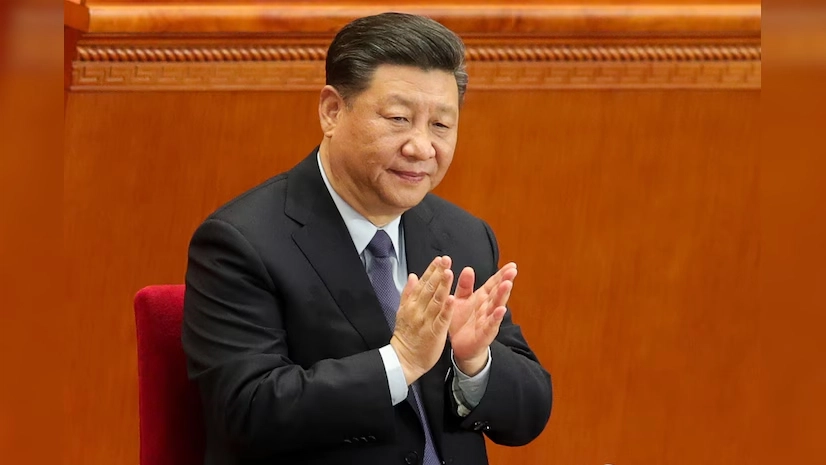China-Vietnam Trade Relations Strengthen Amid Global Tariff Tensions: On Monday, April 14, 2025, Chinese President Xi Jinping called for more China-Vietnam economic ties before he visited Hanoi. He appealed in a message released in Vietnam’s state media, in which he urged firmer industrial and supply chain links.
Xi warned against protectionism in trade and stressed Asian nations’ unity. The message will shape the tone of his three-nation tour of Southeast Asia beginning today, which involves Vietnam, Malaysia, and Cambodia. The visit underscores China’s attempts to mobilize regional support amidst heightened tensions with the United States over tariffs.
Also Read | China Adopts Bold Trade War Strategy to Counter Trump’s Tariffs
China-Vietnam Trade Relations Strengthen Amid Global Tariff Tensions: Insights
- Xi Jinping seeks stronger China-Vietnam trade relations and closer cooperation in emerging technologies.
- He emphasized the need to maintain global supply chain stability.
- Xi criticized trade wars without naming the US, calling them harmful to global growth.
- Vietnam welcomed deeper ties in diplomacy, security, and infrastructure.
- Three new rail links between China and Vietnam are under discussion.
- Xi invited more Vietnamese exports into China and promoted Chinese investments in Vietnam.
- The US has imposed high tariffs on Asian countries, including a 145% tariff on Chinese goods.
- Vietnam has taken steps to align more with US demands amid transshipment concerns.
- China seeks unity among Asian countries to counter US trade actions.
Background
Trade tensions between China and the United States have escalated in recent years. Under President Trump, the US imposed high tariffs on Chinese products. China responded with its measures, leading to a tit-for-tat trade conflict. Southeast Asian countries like Vietnam were seen as alternatives to China for exports to the US.
However, allegations of Chinese goods being rerouted through Vietnam led to added pressure on Hanoi. Amid these challenges, China-Vietnam trade relations have remained stable, with both nations seeking ways to strengthen economic and political cooperation.
Main Event
Xi Jinping, ahead of his Southeast Asia tour, sent a strong message through Vietnam’s Nhan Dan newspaper. He stressed the importance of deepening China-Vietnam trade relations and regional supply chain cooperation. Xi warned that trade and tariff wars harm everyone involved, arguing they weaken the global economic order.
He called on Asian countries to support multilateral trade systems and oppose protectionist policies. Xi’s words appeared to be a veiled criticism of US tariff actions, especially the 145% tariff imposed on Chinese imports.
Xi also encouraged joint development in 5G, artificial intelligence, and green energy. He proposed increased Vietnamese exports to China and urged Chinese businesses to invest in Vietnam.
Vietnam’s Communist Party Chief To Lam echoed these views. He highlighted infrastructure, diplomacy, and security as areas of focus. In his article, Lam mentioned three proposed rail links as the top priority for both nations. Lam also spoke on cultural ties and mutual respect. He said the two countries’ friendship is important for peace and future growth.
This display of solidarity comes as the US continues to pressure Asian economies with tariffs. Vietnam, which is subject to a 46% tariff from the US, has started cracking down on deceptively labelled exports to assuage Washington’s concerns.
Nevertheless, the nation remains committed to developing relations with China, particularly in trade and technology.

Chinese President Xi Jinping has set out on his first international tour, visiting Vietnam, Malaysia, and Cambodia for meetings with regional leaders, as tensions from the US-China trade war continue to unfold.
Photo Credits: Bloomberg.
Also Read | Trump Orders Semiconductor Security Probe Amid China Tariff Tensions
Implications
The expanding China-Vietnam trade relationship may realign regional power dynamics. China wants to form a common front with neighbours against US tariffs. Vietnam could gain greater access to the Chinese market and receive investments, fueling its economy.
But it is a challenge for Hanoi to balance relations between China and the US. Companies in the region have to adjust to shifting policies while governments try to safeguard supply chains. As tensions increase, Southeast Asia may have an important role to play in the formation of future trade blocs and economic collaboration in Asia.
Conclusion
Xi Jinping’s visit is a bid to deepen China-Vietnam trade ties and unite Asian countries against US tariffs. Both Vietnam and China have expressed a keen interest in deepening cooperation in trade, technology, and infrastructure. As global trade stands at a crossroads, the way these alliances shape up could determine Asia’s economic destiny. Regional cohesion may be the key to withstanding external pressures and ensuring stable growth, experts feel.



